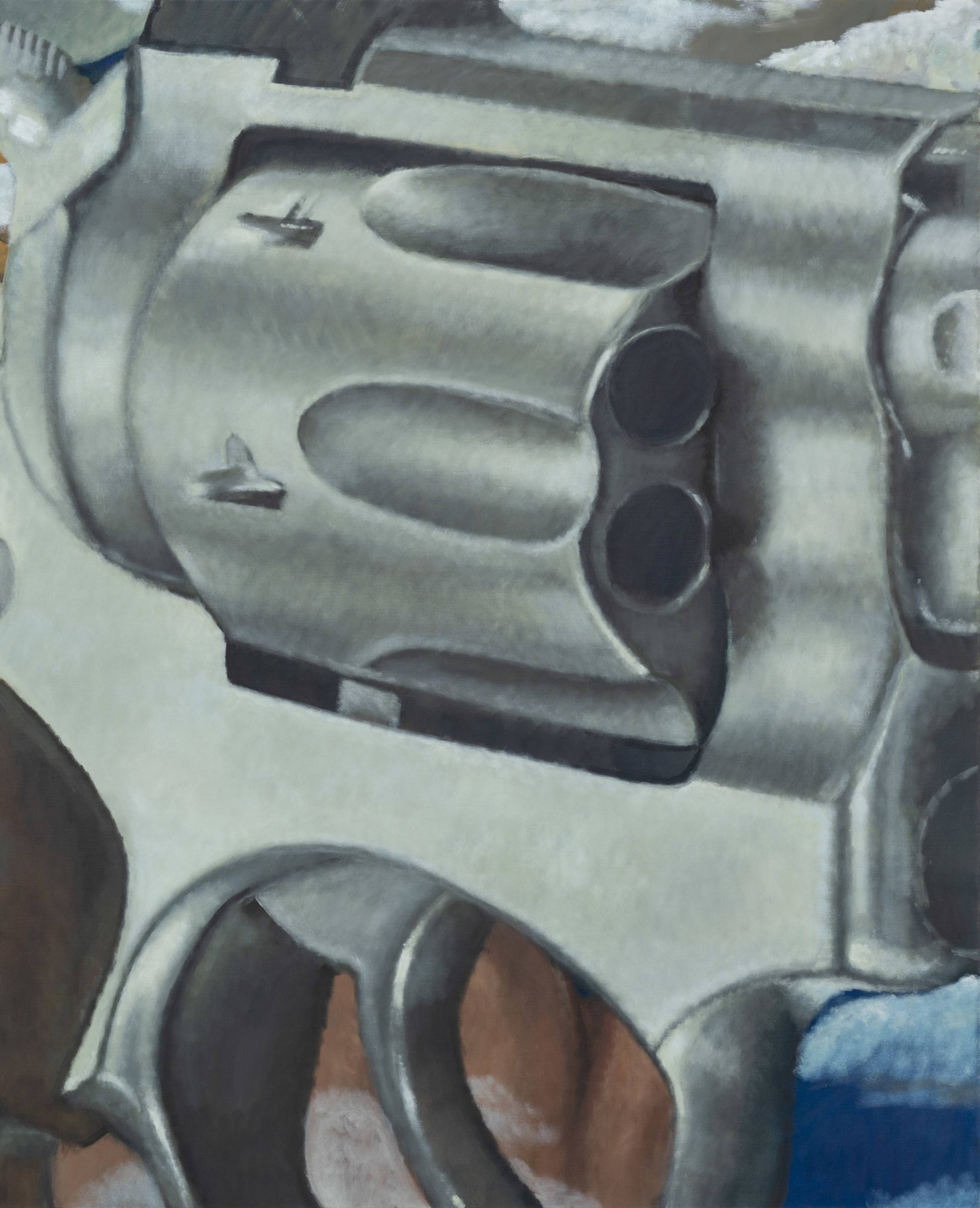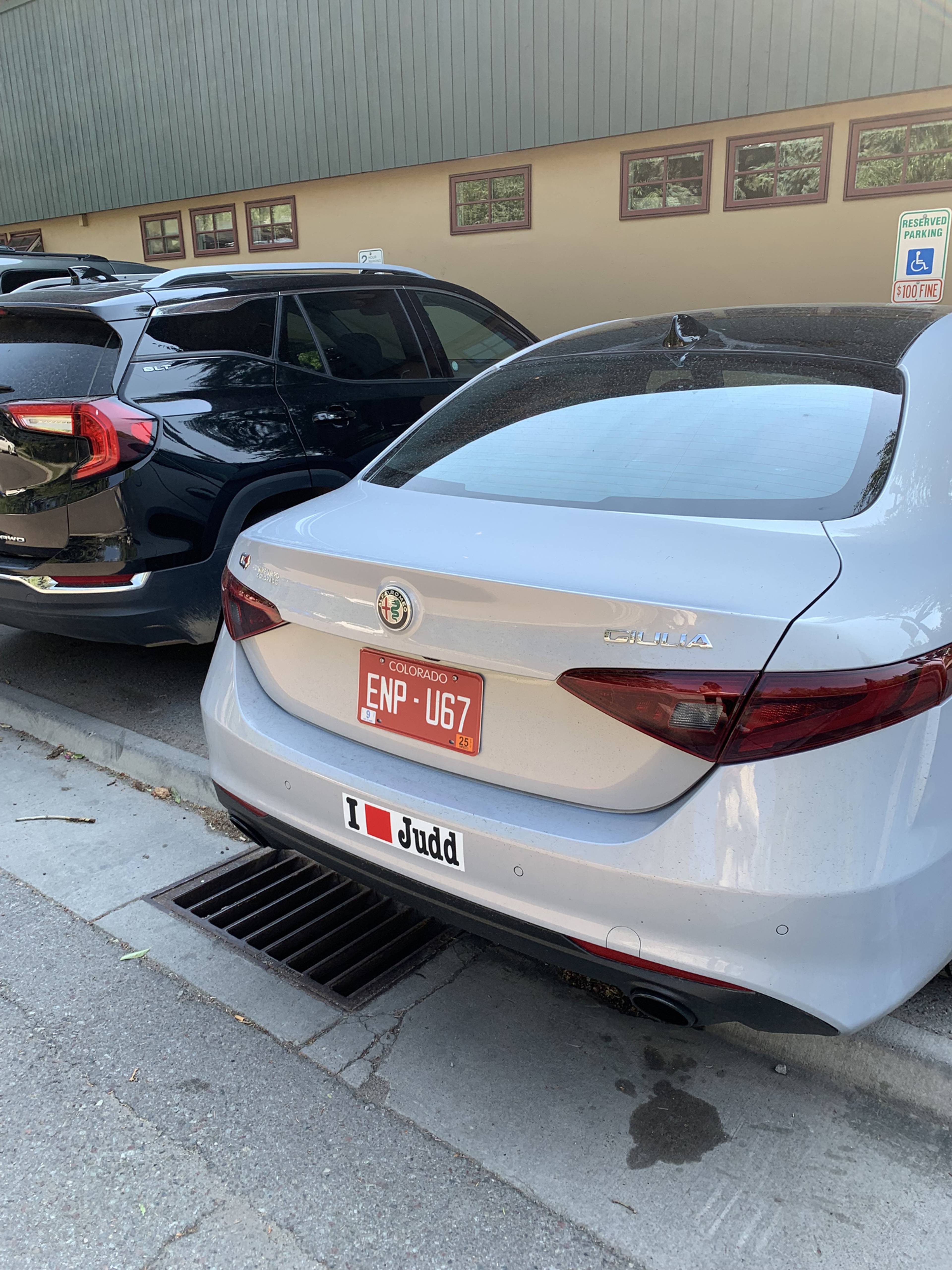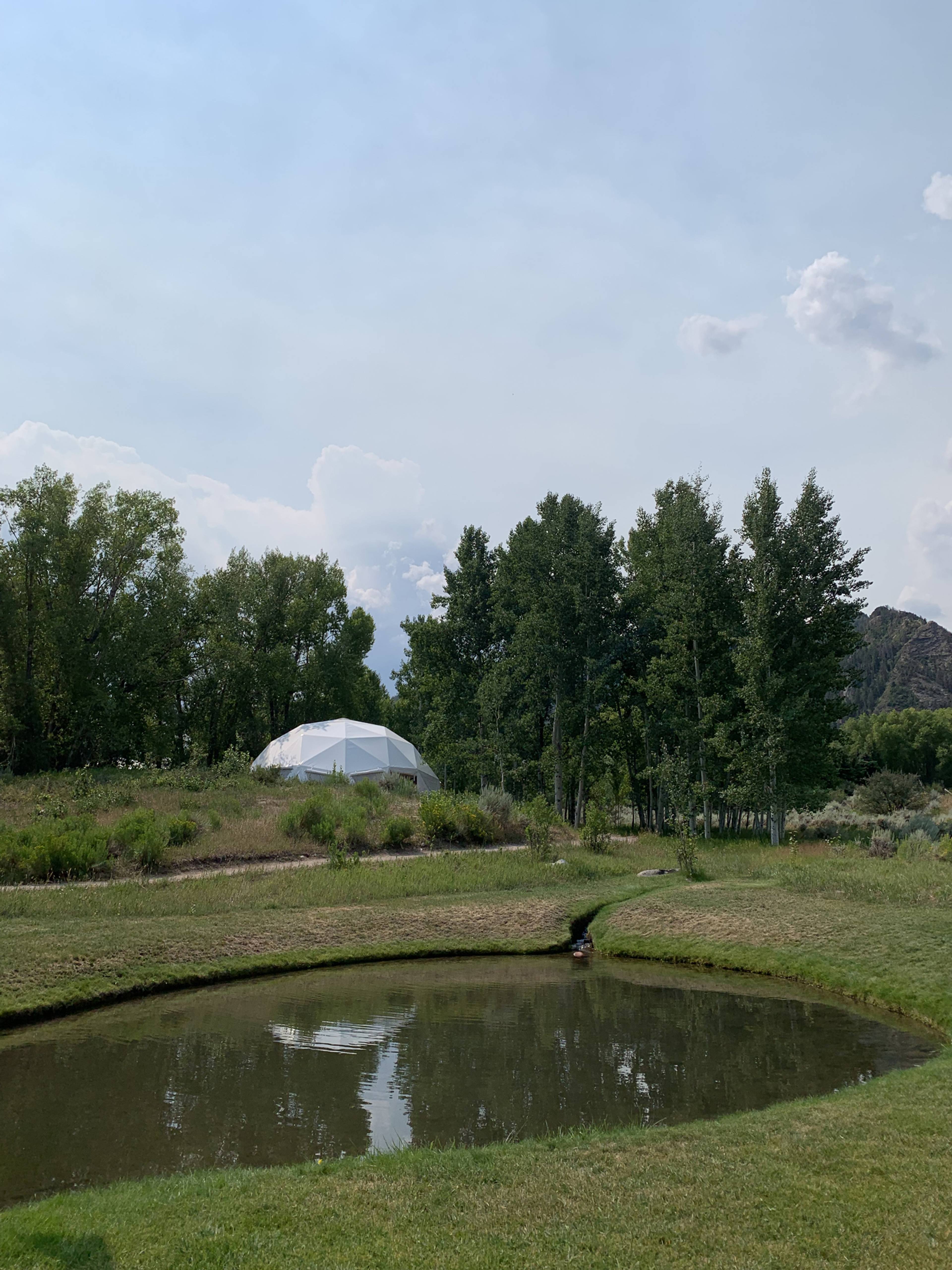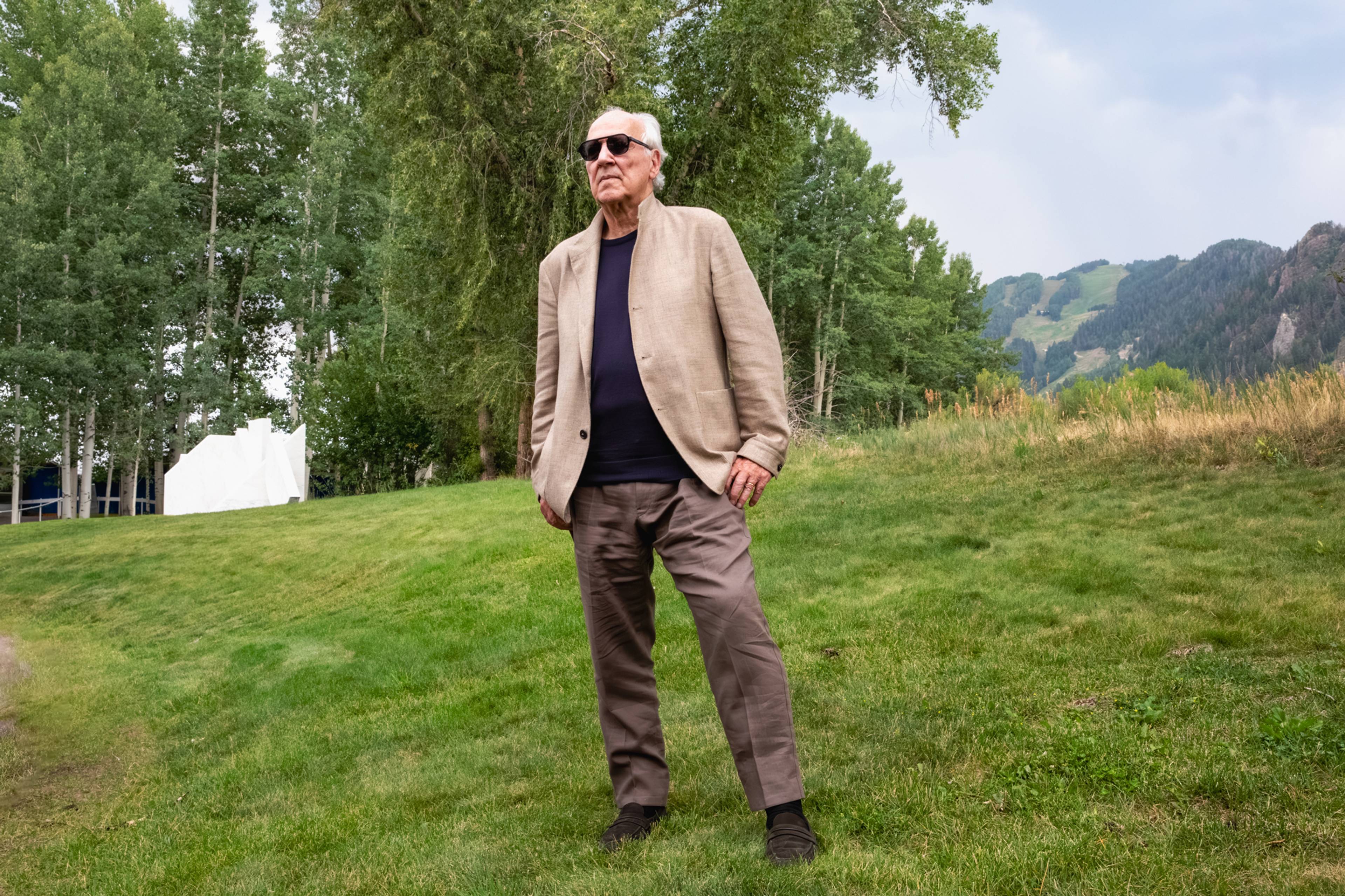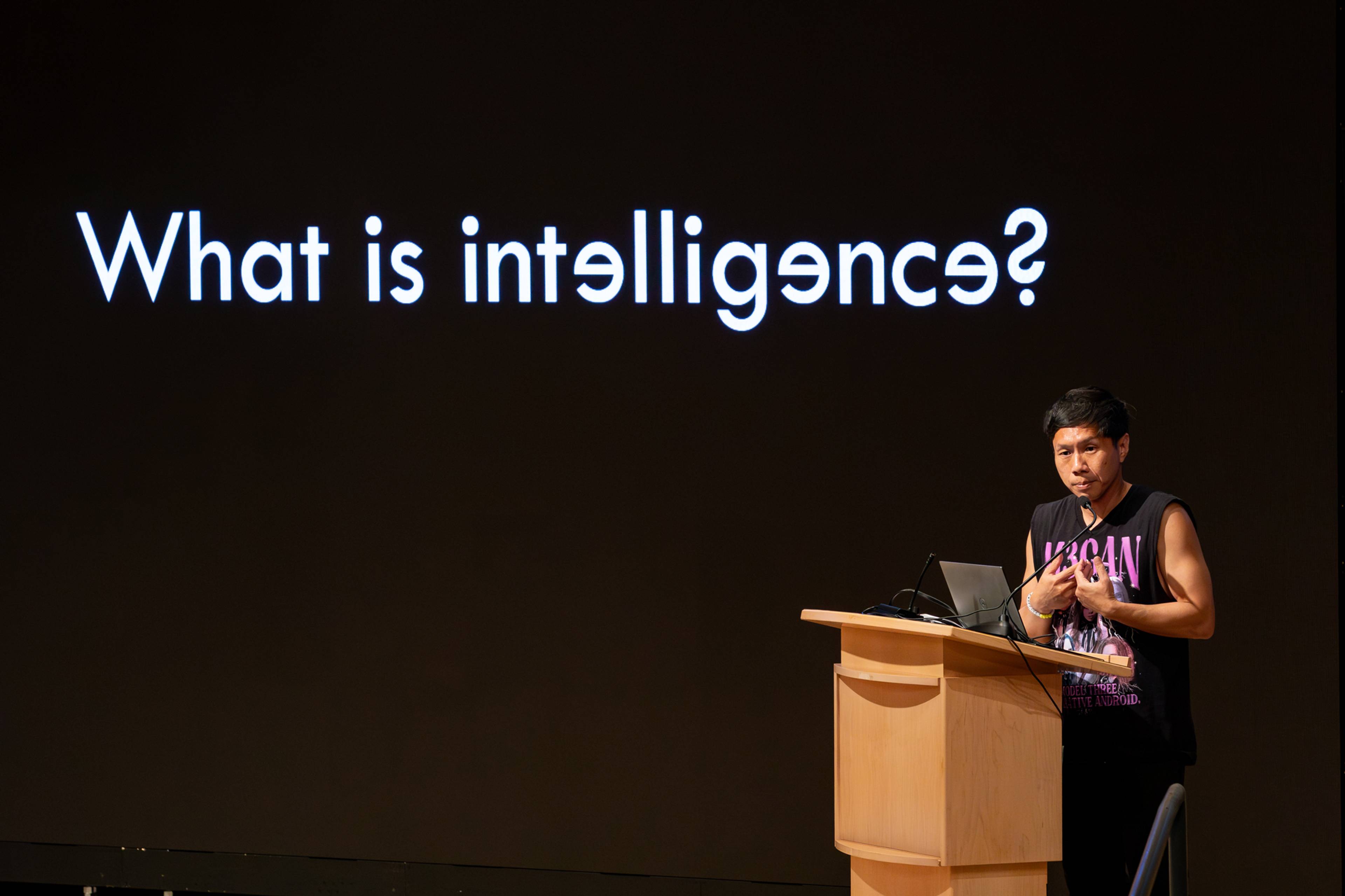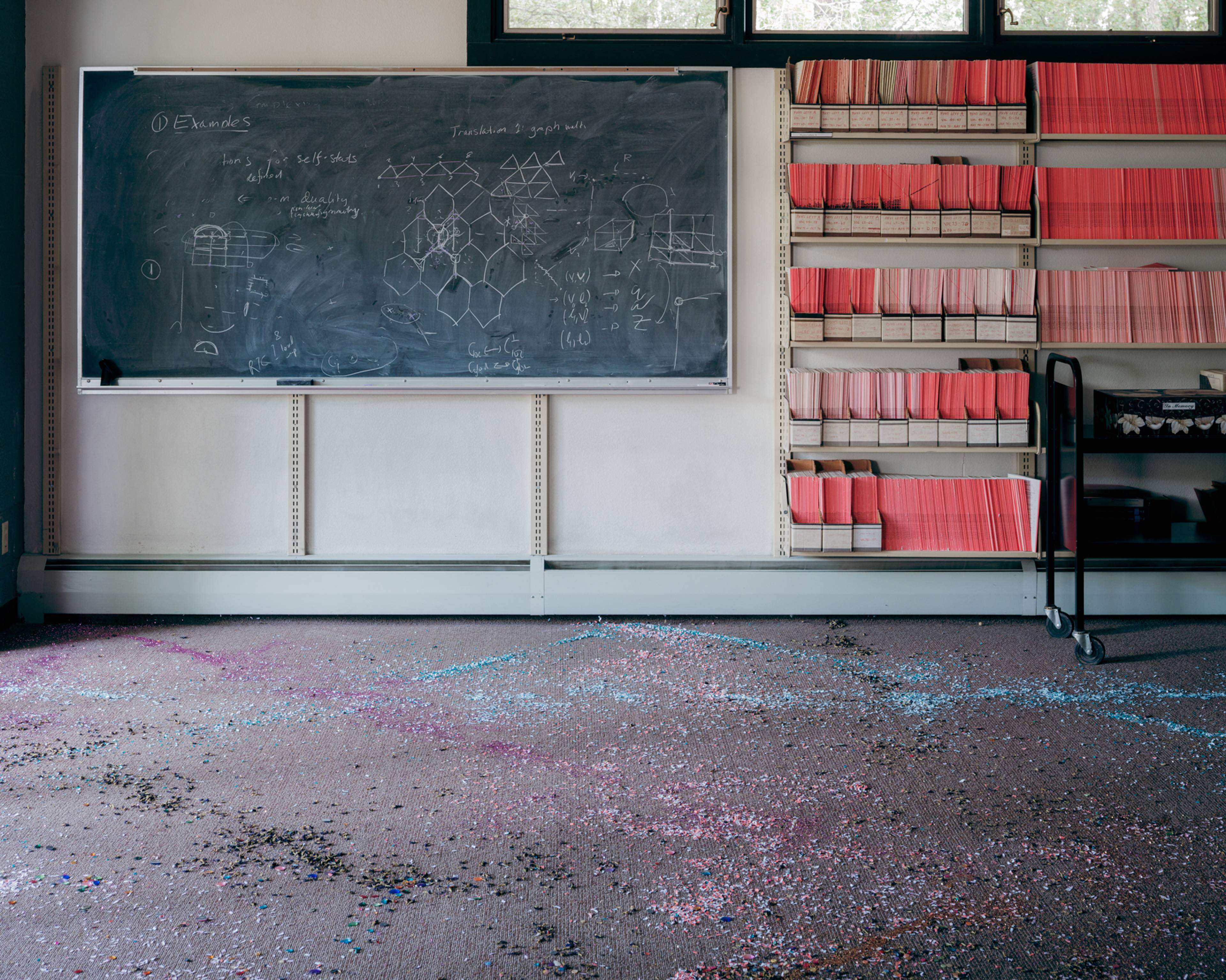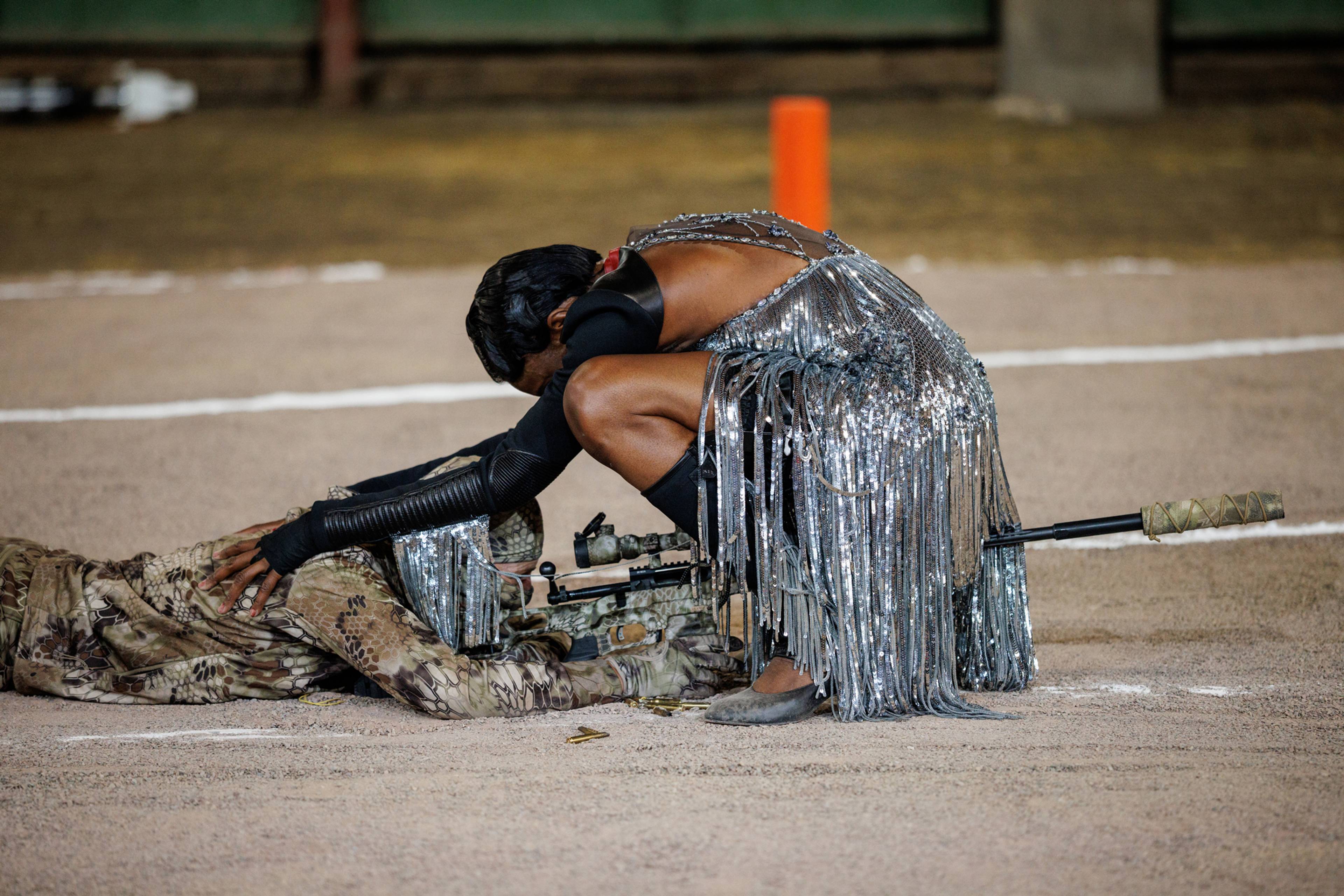A cardboard cutout of a black bear greets me at the airport in Aspen, Colorado, faintly illuminated by the glow of LED screens running luxury fashion ads throughout baggage claim. “Be Bear Aware!” – even in the ritziest of resort towns, danger may lurk around every corner. I’ve made the glissade across the Rocky Mountains for the first edition of AIR, a weeklong festival dedicated to “radical imagination, art, and exchange” at the Aspen Art Museum (AAM).
The directive seems to be: Davos for the Serpentine set. The program features performances, installations, and talks that bleed between disciplines, “designed to explore the role of art in addressing the questions and complexities of our time” by bringing artists, architects, theorists, and technologists together in the brisk mountain air. A twenty- million-dollar, ten-year venture, it is free and open to the public. “It’s like Silicon Valley meets Santa Fe but make it Switzerland,” a writer from New York observes, wide-eyed, and then takes a huff from her oxygen canister. My travel itinerary comes with a warning: “Aspen is home to an array of wildlife… Black bears are intimidated by large movements and loud noises, while moose are more aggressive and should be avoided.”
At the kickoff, a chat between artist Issy Wood and critic-cum-rockstar Johanna Fateman set in the bucolic surrounds of Anderson Ranch, the only wildlife I manage to spot is Hans Ulrich Obrist. Wood flips through install shots of her sought-after paintings: diminutive still-lifes of tchotchkes; TV screengrabs; and self-portraits, her face often obscured by some skincare product or another. The self-portraits aren’t for sale; despite – or perhaps because of – her cultish, it-girl status, Wood dislikes the thought of marketing her own likeness. Her latest works, she tells Fateman, are more surreal and composited. Lately, her motifs of choice have turned to timepieces and guns. She learned from Lee Lozano that guns can be so beautiful that you can almost forget what they do.
Issy Wood, Sounds ominous study, 2024, oil on linen, 215 x 175 cm. Courtesy: the artist and Michael Werner Gallery, Berlin/London/New York
That fine line between beauty and danger pervades Aspen’s high-altitude sublime. Perhaps it owes to the fractious nature of, well, nature – which has left many marks on this city’s art-historical record. The AAM’s CEO and artistic director, Nicola Lees, tells me that Christo and Jeanne-Claude came to Aspen in August 1970 to scout locations for their Valley Curtain, which they erected for just over twenty-four hours, before wild wind conditions necessitated its de-install.
Aspen has long been a haven for experimental convenings and interdisciplinary thought – a site where the definition of art is renegotiated to suit the changing times. In the summer of 1970, the Aspen Center for Contemporary Art, a precursor to the AAM, hosted artists Bruce Nauman and Allan Kaprow to kibitz on the newly minted genre of “happenings.” Steve Jobs traveled here in the 80s, and allegedly, the city’s Bauhaus legacy inspired the design of the first Mac. “Artists and other thinkers, for somewhat mysterious reasons, have felt freer to try new things here,” Lees tells me. Artist and author Aria Dean, who served as a sort of spiritual advisor to AIR’s program, echoes this sentiment: There’s something in the strata of lore, here (see also: the Battle of Aspen). Something salient, intriguingly challenging. “Like Aspen’s history of convenings of different political valences – everything from design to spirituality to defense. It’s a strange collision.”
Art should be elegant in the mathematical sense, but bears no obligation to efficiency.
That same summer, in 1970, Artforum founding editor Philip Leider published an essay called “How I Spent My Summer Vacation.” Driving through Glenwood Canyon, my mind wanders to Leider’s diary of a road trip through the American West, as he and a merry band of Land artists and Minimalists (Richard Serra, Robert Smithson, Keith Sonnier) debate art’s obligation to politics as the US began to confront the failure of the Vietnam War. Smack in the middle of the “six years” that, for critic Lucy Lippard, defined art’s dematerialization, Leider deliberates: What counts as art, anyway, versus other forms of expression and political action? Throwing money on the floor of the New York Stock Exchange? Constructing a spiral jetty in the Great Salt Lake? What about dropping bombs?
Today, the question of art’s relationship with politics might be reformulated from effectuating social change to distinguishing between art and information. A conversation at the festival between poet/economist Zoe Hitzig and neuroscientist Anil Seth lands on the comforting (to me) reminder that consciousness is not a natural emergent property of computational systems, no matter how “intelligent.” Humans will always be “in the loop,” they agree, when it comes to making art. Yet the rise of generative AI, which has driven the marginal cost of image creation to near-zero (at least in terms of intellectual expenditure; ecological externalities are a different story), strikes me as a paradigm shift on the level of the advent of Conceptualism, throwing the meaning of “art” into flux.
Day two of the program unfolds at the Aspen Institute, an idyllic campus that houses a collection of Modernist earthworks – the sort of thing I can imagine Serra and Leider getting into it about – and an OG Bucky Fuller geodesic dome. It is also home to the Aspen Strategy Group, a think tank that advises on national security and military affairs. Even the bottled water here is elite, engineered: “MCW,” micro-clustered water, its chemical structure rearranged to make it extra hydrating. The packaging (plastic – tsk!) bears a diagram of the designer molecule, which looks like the Kabbalistic Tree of Life. I slug my superwater and soldier on.
Photos: Adina Glickstein
In the spirit of Leider, I’ve taken to asking around: What’s the difference between art and information? “I’m for an art that is not information and that is against information,” Spike-launched celeb Dean Kissick tells me. “There is too much information.” Aria Dean corroborates: “I think it is really important that there’s no use value to the activity of making art.” It’s more about process than conclusions; unlike so many realms of life, in art, “we don’t need to get to something quicker.” I’m in agreement: Art should be elegant in the mathematical sense, but bears no obligation to efficiency. Kickstarter cofounder Yancey Strickler wins the bumper-sticker-slogan contest, quipping: “Information is an echo of truth. Art is a stalactite of God.”
Opening the day’s keynote, Werner Herzog (inadvertently) weighs in on my little debate in his Bavarian baritone: “What is art? I couldn’t really answer what art is.” I watch his speech from the green room, where I’ve gone to scavenge for food, but the last catering trays are being cleared as I arrive. “I’m not an artist,” Herzog deadpans; “I’m a soldier.” Paul Chan (an artist and publisher who does not self-identify as a soldier) generously feeds me a fatty piece of lamb off his own plate, with his bare hands. I feel feral. Maybe I am the wildlife they warned us about?
A sympathetic caterer sneaks us a nearly full bottle of Sancerre as we watch Herzog muse about elusive “ecstatic truth,” – a spiritual knowing, not truth qua information – that animates his documentary pursuits. At one point, Herzog accuses “so-called philosopher” Slavoj Žižek of being an large language model. Well, I can neither confirm or deny. But Chan is actually building an AI version of himself. Paul’, pronounced “Paul-prime,” is a small language model, trained on his previous writings and archival materials. It answers queries ranging from the philosophical to the operational, like handily dispensing instructions on how to install Chan’s sculptural works, relayed in a deepfake of the artist’s own voice.
Werner Herzog at AIR 2025. Photo: Elyse Mertz
Paul Chan, Sympathy for the Devil in the Machine, 2025. Performance documentation, Aspen Institute, as part of AIR 2025. Photo: Elyse Mertz
The festival platforms the first public dialogue between the artist and his AI self. At the end of the demo, I pose my question du jour to the robot: What’s the difference between art and information?
Art is a critique of success; information is often its servant. Art bears blemishes, vulnerability, fallibility – it resists clarity in favor of feeling. Like the sublime in nature that stirs moral attunement. Information seeks to explain; art seeks to endure. All good things were once dreadful things – art remembers this. Information forgets.
The LM often defaults to long-windedness, Human Paul explains apologetically. He himself answers more succinctly: Information makes a truth claim, while art is under no such obligation. Herzog, I think, would disagree.
Mimi Park, Melody from Stomach, 2025. Installation view, Aspen Center for Physics, as part of AIR 2025. Photo: Benjamin Rasmussen
Throwing cash on the floor of the Stock Exchange – for Leider, that’s truth, pure information. Arranging glitter on the floor of the nation’s foremost physics library, on the other hand, is both a science and an art. Mimi Park’s Melody from Stomach (2025), a new commission by AIR, is a site-specific “floor painting” at the Aspen Center for Physics. Park unleashed torrents of loose glitter and confetti, plastic gems, and natural matter across the space – methodically at first – and left it all to reconfigure, inspired by entropy. Right after install, the physicists who work here had a barbecue and their kids went bananas – as the Museum’s chief curator, Daniel Merritt, diplomatically puts it, “bringing the sculpture into a new kind of form.” “Radial dispersion,” says Park, like fireworks. Completion gives way to immediate undoing.
Walking through Melody, glitter gathers in the cleats of my Salomons, and I track it all across town. The festival’s clientele is dripping in designer labels like a veritable Kreayshawn track. Still no bears nor elk to be found, but I finally make the acquaintance of some notable fauna: Dima the Standard Poodle, a canine clad in a string of pearls and companion to stylist Lotta Volkova. Later, crouched in a gossip huddle, I witness a designer inadvertently sit on a mooshy, welcoming soapstone sculpture by Solange Pessoa. “Oh my god, that’s an artwork!”
I think about modern frontiersmen, preppers stockpiling guns and canned tuna, perhaps in bunkers not so far from here.
There is always a shuttle to be caught somewhere, a crowd of collectors clamoring for seats on a souped-up bar mitzvah party bus. On Wednesday evening, a queue cannibalizes the sidewalk outside the museum, awaiting transport to the week’s climax: a performance by Matthew Barney set in a drill hall on a working cattle ranch half an hour outside Aspen. The yawning hall was once the training site for the 10th Mountain Division of the US Army – a unit that, specializing in winter warfare, recruited outdoorsmen to fight in World War II in Italy’s Apennines. As we file into the bleachers, Barney himself traverses the perimeter, playing the groundskeeper, depositing chalk lines on the dirt floor.
TACTICAL parallax (2025) resurfaces characters from Barney’s two most recent films, SECONDARY (2023) and Redoubt (2018), drawing further inspiration from Buffalo Bill’s Wild West, the turn-of-the-20th-century live-theater spectacle that brought sharpshooter Annie Oakley to fame. Thematically sprawling, the work traverses Army Drum Corps demonstrations, dogsledding, rodeo cowboys, and football (the American kind, it goes without saying). Barney’s prairie cabaret revolves around dualities and oppositions, spiraling out from the “cowboys and Indians” motif long dramatized on the Frontier. Rodeo wranglers play opposite a Native American hoop dancer; a female sniper in full-face cover and camo fatigues lies in wait, cradling a hunting rifle, as a cabaret singer, dressed in a gown of glimmering silver tinsel designed by Miuccia Prada, traipses across the hay-covered ground. Beauty and lethality, dancing entwined. Leaving the decommissioned drill hall, I think about modern frontiersmen, preppers stockpiling guns and canned tuna, perhaps in bunkers not so far from here.
Matthew Barney, TACTICAL parallax, 2025. Production still, McCabe Ranch, Aspen, as part of AIR 2025. © Matthew Barney. Photo: Maria Baranova
The language of the “frontier” has been central to the Internet, too – animating everything from early visions of the World Wide Web to the launch of the cryptocurrency Ethereum. Problematic as those techno-homesteading imaginaries may be, the closure of the digital frontier – the ascendance of an AI-powered Dead Internet, devoid of humanity – is much scarier. These concerns surfaced throughout the festival, speaking to art’s enduring value in a changing world. Art, contra Effective Altruism, is not about rational utility-maxxing. It is precisely art’s openness and ambiguity that license it to speak amidst a glut of information.
In step with Park’s installation, the inaugural AIR fest went off like a firework: glitzy, impactful, ephemeral. It did not solve the “complexities of our time,” but I’m not sure I’d have wanted it to. Rumors of bear sightings abounded, uncorroborated (but who’s to tell what Dima the Poodle saw on his evening walk?). I arrive, rain-soaked and resenting the existence of my body, to the closing performance, a stripped-down set by Caroline Polachek. As she warbles the chorus to “Hey Big Eyes” (2019), a stupid thought comes to my mind: A computer could never appreciate this moment, really. Not to spoil anything – read his essay! – but Leider lands on the conclusion that “revolutionary art is where you find it,” which is not too different from what makes art “good” in the first place. We might be stuck with our fleshly suffering till the singularity cometh, but friction is proof of humanity.
___
AIR 2025: “Life As No One Knows It”
Aspen Art Museum
29 Jul – 1 Aug 2025



